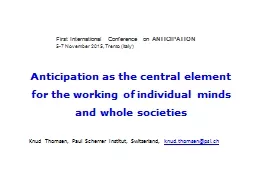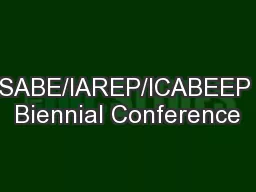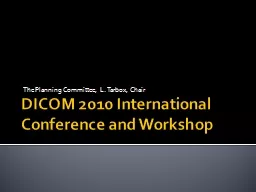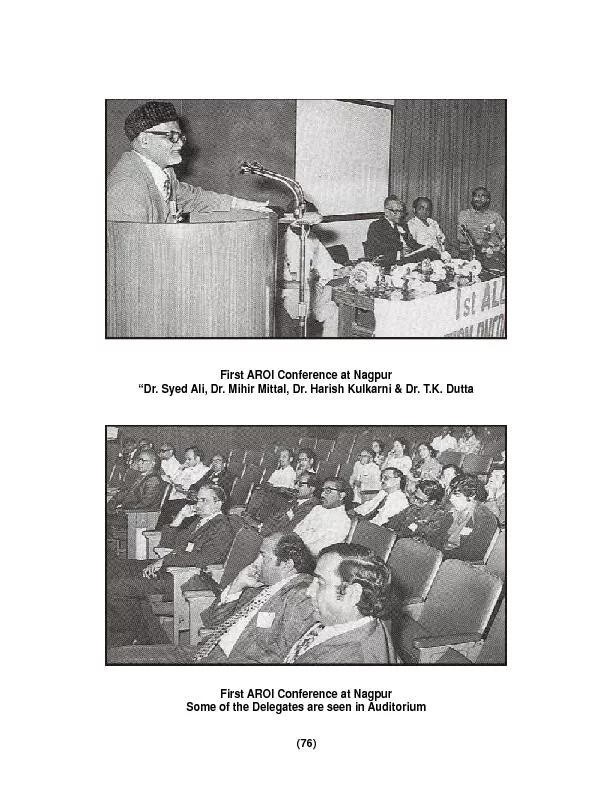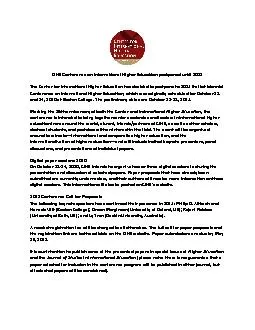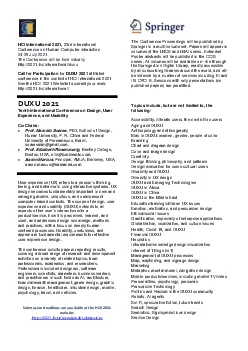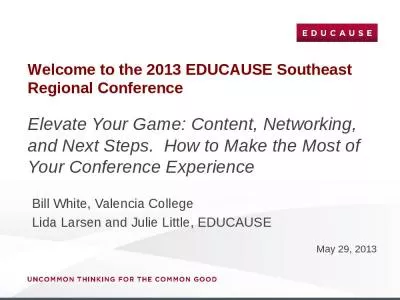PPT-First International Conference on
Author : calandra-battersby | Published Date : 2016-07-08
ANTICIPATION 57 November 2015 Trento Italy Anticipation as the central element for the working of individual minds and whole societies Knud Thomsen Paul Scherrer
Presentation Embed Code
Download Presentation
Download Presentation The PPT/PDF document "First International Conference on " is the property of its rightful owner. Permission is granted to download and print the materials on this website for personal, non-commercial use only, and to display it on your personal computer provided you do not modify the materials and that you retain all copyright notices contained in the materials. By downloading content from our website, you accept the terms of this agreement.
First International Conference on : Transcript
Download Rules Of Document
"First International Conference on "The content belongs to its owner. You may download and print it for personal use, without modification, and keep all copyright notices. By downloading, you agree to these terms.
Related Documents

